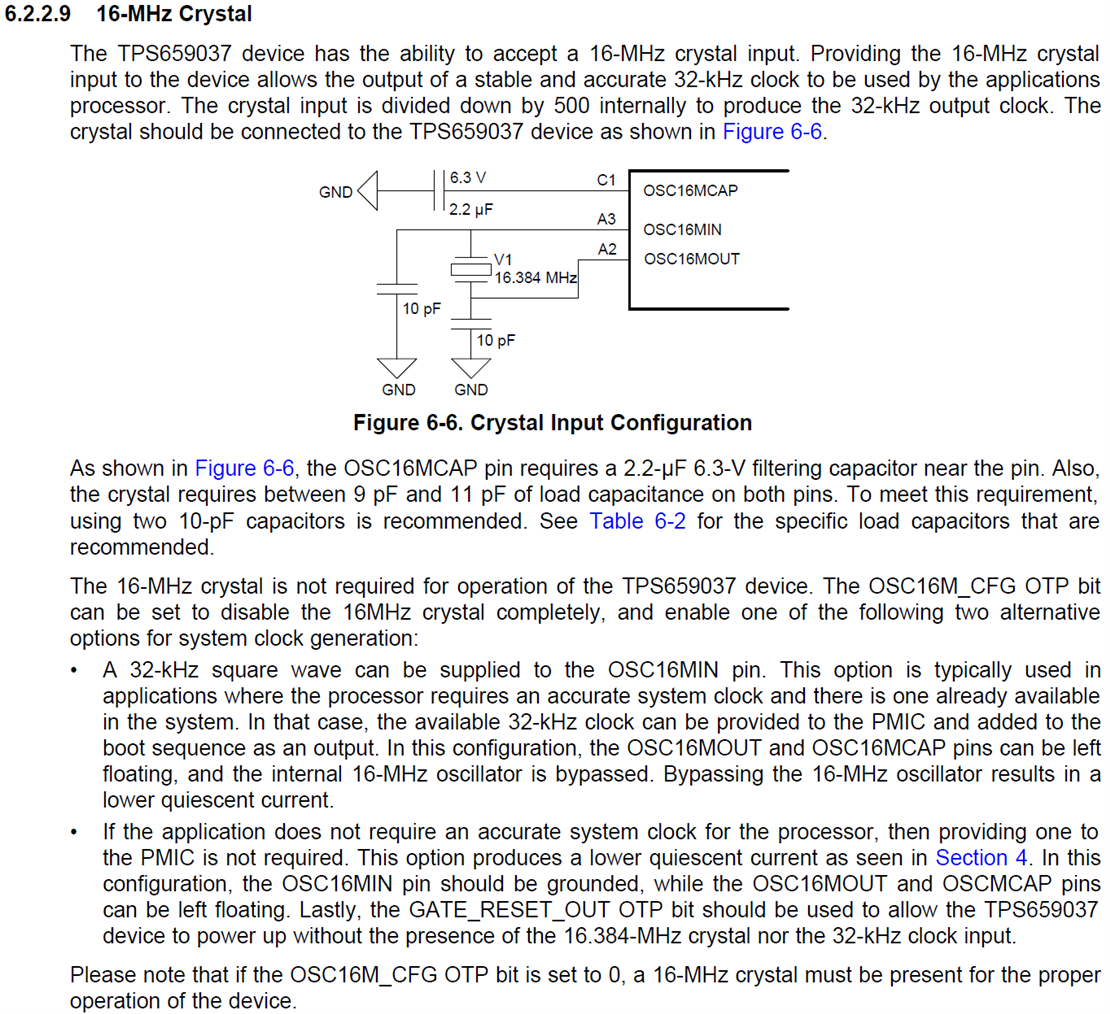Tool/software:
Hi team,
My customer is considering to use the clock oscillator for OSC16MIN of TPS659037.
My cusotmer has checked the two threads below, but it's still unclear if using clock oscillator for OSC16MIN is allowed.
Could you please double check?
>3.Yes; it's OK to input the clock from the oscillator operating with 1.8V.
TPS659037: OSC16MIN inqueries - Power management forum - Power management - TI E2E support forums
>We do not recommend using a 16MHz crystal. Please use the recommended 16.384MHz crystal oscillator as various other internal clocks are built off of this frequency.
Best regards,
Kazuki Itoh


